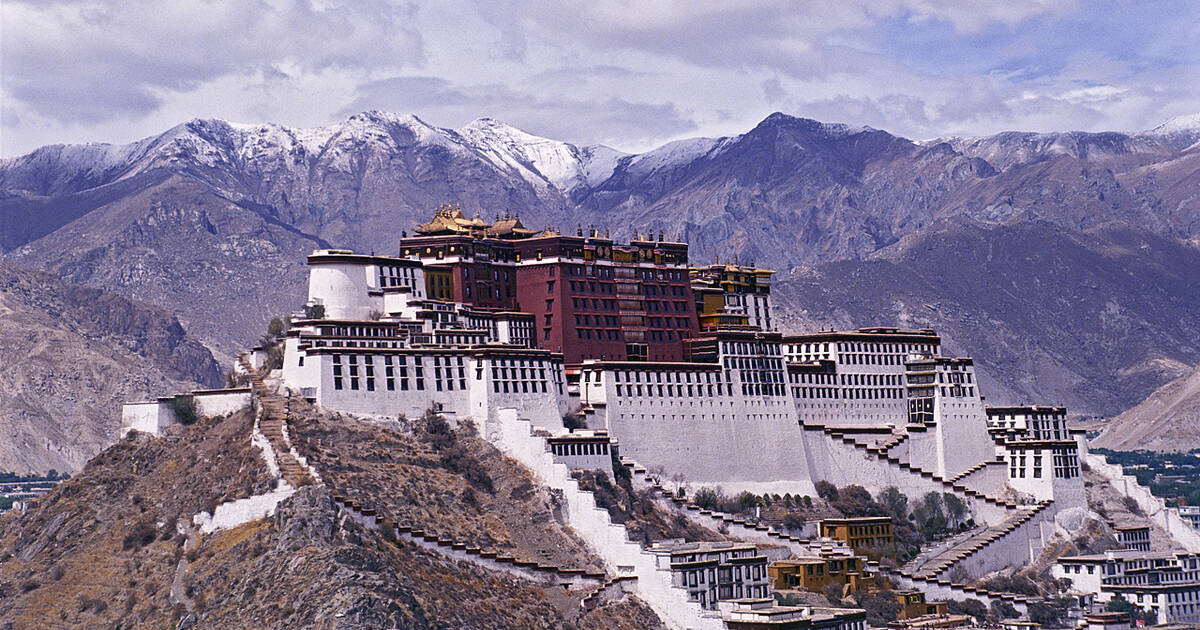
The Potala Palace is one of the most iconic landmarks in the world, located in Lhasa, Tibet. Steeped in history and cultural significance, this magnificent structure has captured the imagination of people from all corners of the globe. With its unique architecture and breathtaking setting, the Potala Palace stands as a testament to the rich Tibetan heritage and Buddhist traditions.
As a UNESCO World Heritage Site, the Potala Palace has drawn countless visitors who are eager to explore its grand halls, intricate artwork, and spiritual atmosphere. This article will delve into seventeen fascinating facts about the Potala Palace, revealing intriguing details about its construction, religious significance, and the role it plays in Tibetan society.
Key Takeaways:
- Potala Palace, located in Tibet, is the highest ancient palace in the world, with over 1,000 rooms and stunning golden roofs. It’s a significant religious site and a UNESCO World Heritage site.
- The palace’s rich history, breathtaking architecture, and cultural significance make it a must-visit for tourists, inspiring artists and writers throughout history. It symbolizes Tibetan identity and resilience, captivating visitors with its beauty and spirituality.
The Potala Palace is the highest ancient palace in the world.
Sitting atop Marpo Ri Hill, the Potala Palace stands at an elevation of 3,700 meters, making it the highest ancient palace ever built.
It was originally built in the 7th century.
The construction of the Potala Palace began during the reign of King Songtsen Gampo in the 7th century and was later expanded by the 5th Dalai Lama in the 17th century.
There are over 1,000 rooms in the Potala Palace.
The palace complex comprises more than 1,000 rooms, including chapels, halls, and living quarters, spread across 13 stories.
The palace is a significant religious site for Tibetan Buddhism.
The Potala Palace is considered a holy site for Tibetan Buddhists and serves as the winter residence for the Dalai Lama.
It houses numerous precious artifacts and religious relics.
Inside the Potala Palace, you will find a vast collection of Buddhist art, including intricate thangka paintings, statues, and ancient scriptures.
The palace is adorned with stunning golden roofs.
The roofs of the Potala Palace are covered in pure gold, giving the entire structure a majestic and radiant appearance.
It took over 50,000 artisans to build the palace.
The construction of the Potala Palace involved the collaborative efforts of over 50,000 skilled artisans, including craftsmen, painters, and sculptors, over several years.
The palace has withstood multiple earthquakes and fires.
Throughout its long history, the Potala Palace has endured several earthquakes and fires yet has been successfully restored and preserved.
The palace is divided into two main sections: the Red Palace and the White Palace.
The Red Palace is dedicated to religious study and houses various chapels and sacred halls, while the White Palace serves as the administrative quarters of the Dalai Lama.
It is known for its magnificent frescoes and murals.
The walls of the Potala Palace are adorned with exquisite frescoes and intricate murals depicting Buddhist teachings, historical events, and Tibetan folklore.
The palace offers stunning panoramic views of Lhasa.
From the top of the Potala Palace, visitors can enjoy breathtaking views of the entire city of Lhasa, including the glistening turquoise waters of the Lhasa River.
It is a major tourist attraction in Tibet.
The Potala Palace attracts millions of tourists each year, who come to admire its beauty, learn about Tibetan history, and experience the peacefulness of the surrounding landscape.
The palace has inspired numerous works of art and literature.
Throughout history, the Potala Palace has served as a muse for artists, writers, and poets, who have sought to capture its grandeur and spiritual significance.
It is a symbol of Tibetan identity and resilience.
The Potala Palace holds immense cultural and historical significance for the Tibetan people, representing their identity, spirituality, and unwavering spirit in the face of adversity.
It became a UNESCO World Heritage site in 1994.
In recognition of its outstanding universal value, the Potala Palace was designated as a UNESCO World Heritage site in 1994, ensuring its protection and preservation for future generations.
The palace is a testament to Tibetan architectural mastery.
The architectural brilliance of the Potala Palace, with its intricate woodwork, vibrant colors, and meticulous details, showcases the remarkable craftsmanship of Tibetan artisans.
Visitors can explore the palace’s magnificent gardens.
Surrounding the Potala Palace are lush gardens adorned with vibrant flowers, providing a serene and picturesque environment for visitors to enjoy.
These 17 fascinating facts about the Potala Palace only scratch the surface of the wonders and significance that this iconic landmark holds. From its devout religious importance to its incredible architectural marvels, the Potala Palace continues to awe and inspire all those fortunate enough to visit.
Conclusion
The Potala Palace is truly a remarkable and awe-inspiring landmark. Its rich history, stunning architecture, and cultural significance make it a must-visit destination for travelers. From its lofty perch in the Himalayas to its beautifully adorned interiors, every aspect of the palace tells a story of Tibetan heritage and spiritual devotion.Whether you are interested in history, architecture, or simply experiencing the beauty of a world-renowned landmark, the Potala Palace has something to offer everyone. As you explore its grand halls, intricate murals, and sacred chapels, you can’t help but feel a sense of reverence and wonder.Visiting the Potala Palace is not only a chance to admire its beauty, but also an opportunity to immerse yourself in the spiritual traditions of Tibet. It serves as a reminder of the enduring cultural legacy of this Himalayan region and the importance of preserving and appreciating our world’s most significant landmarks.In conclusion, the Potala Palace is a truly enchanting place that captivates visitors with its grandeur and spiritual ambiance. A visit to this UNESCO World Heritage Site promises to be an unforgettable experience that will leave you in awe of its historical and cultural significance.
FAQs
1. How old is the Potala Palace?
The Potala Palace was first built in the 7th century, approximately 1,300 years ago.
2. How high is the Potala Palace?
The Potala Palace stands at an elevation of 3,700 meters (12,100 feet) above sea level.
3. How many rooms are in the Potala Palace?
The Potala Palace consists of over 1,000 rooms, including chapels, libraries, and living quarters.
4. Is the Potala Palace open to the public?
Yes, the Potala Palace is open to the public for guided tours. However, due to its cultural importance and fragile structure, there are restrictions on the number of visitors allowed each day.
5. Can I take photographs inside the Potala Palace?
No, photography is not allowed inside the Potala Palace. However, you are permitted to take photos of the exterior and surrounding areas.
6. How long does it take to visit the Potala Palace?
A typical visit to the Potala Palace takes around 2 to 3 hours, but it may vary depending on the pace of your tour and the number of visitors.
7. Is there an entrance fee to visit the Potala Palace?
Yes, there is an entrance fee to visit the Potala Palace. The fee may vary for different types of visitors, such as local residents, domestic tourists, and international tourists.
8. Is the Potala Palace accessible for individuals with disabilities?
Unfortunately, the Potala Palace does not have full accessibility for individuals with disabilities due to its steep staircases and lack of elevators. However, there are certain areas that can be accessed with assistance.
Potala Palace's fascinating history and stunning architecture captivate visitors from around the world. This ancient structure has served as both a monastery and a symbol of Tibetan culture, with its numerous rooms housing precious artifacts and religious relics. Exploring the palace's magnificent gardens and taking in the breathtaking views of Lhasa is an unforgettable experience. To learn more about Potala Palace's former life as a monastery or to discover surprising facts about Tibet, check out our other articles.
Was this page helpful?
Our commitment to delivering trustworthy and engaging content is at the heart of what we do. Each fact on our site is contributed by real users like you, bringing a wealth of diverse insights and information. To ensure the highest standards of accuracy and reliability, our dedicated editors meticulously review each submission. This process guarantees that the facts we share are not only fascinating but also credible. Trust in our commitment to quality and authenticity as you explore and learn with us.


